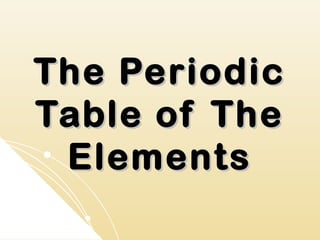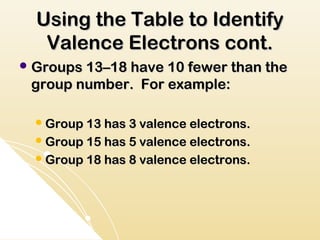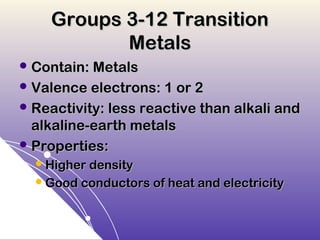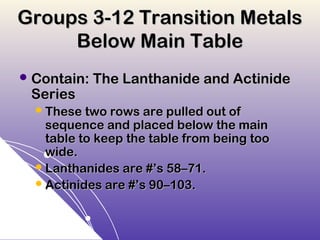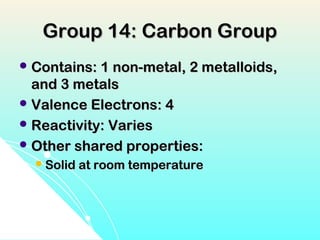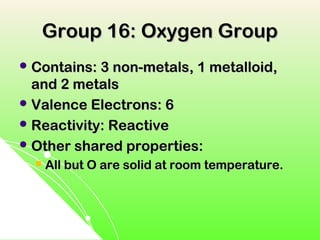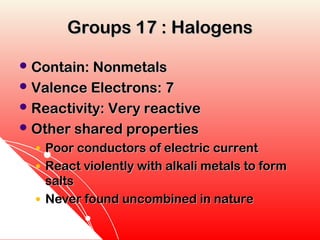The periodic table arranges the elements based on atomic number and chemical properties. It is divided into metals, nonmetals, and metalloids. The periodic table predicts chemical behavior, trends, and element properties. It organizes elements by atomic structure, number, and physical/chemical traits.
